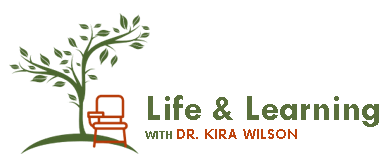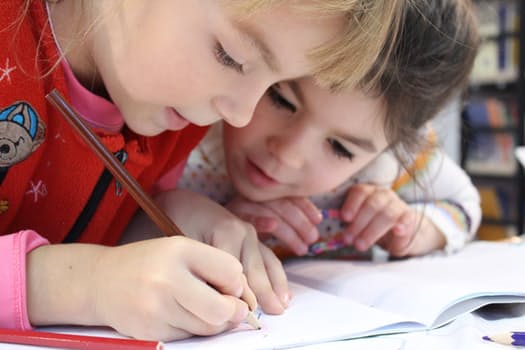What are Learning Styles?
Learning styles describe the way you process, learn, and remember information. Students, parents, and teachers benefit from understanding student’s preferred method of processes new information and from identifying strategies for learning. You can identify learning styles by asking some simple questions. When learning something new do you: see images in your mind and prefer visual presentation, do you like listening to an explanation to learn something new, or do you prefer a demonstration or opportunity to experience the concept in a physical way?
Most students process information in more than one way. The stages of learning along with age and opportunity can affect the styles used by a student. Young children are primarily kinesthetic learners and use their senses to understand their surroundings. As children develop, preferences become stronger and more dominant. Learning style can also affect how a person communicates, approaches a problem, or functions within a group.
Three Primary Learning Styles
Although a combination of strategies are used to help us learn and process data, individuals function with a dominate style for learning new information. The primary learning styles are visual, auditory, and kinesthetic.
Visual learners learn by seeing, auditory learners learn by hearing, and kinesthetic learners learn by doing.
Visual Learners
The visual learner profits from information presented visually in a picture or design format. In a classroom setting, students benefit from instructors who use visual aids such as whiteboards, projected images, film, video, maps, and charts. Students also benefit from the pictures and diagrams in textbooks and having an outline to follow during a lecture. They may have an artistic side and enjoy visual arts and design activities.
Visual learners may close their eyes, roll their eyes or look up as if trying to retrieve the file of information from their memory. Students, who learn and think best in pictures, use these images to retrieve information, often visualizing a picture of it in their mind. If a student does not have a visual image to retrieve they have no information to work with. For example, asking a visual learner to spell a word that has not been stored in their visual memory is challenging.
A visual learner may have a photographic memory and remember where information is on a page. They may be familiar with their Bible, for example, and remember that a passage is located in the second column on the bottom of the left page. If a new Bible is used, the learner will have difficulty finding the verses.
Other characteristics of the visual learner include the need to have verbal instructions repeated, like being organized and tidy, are skilled at making visual presentations (posters, graphs, display boards), and may be detail oriented.
Challenges for the Visual Learners
Visual learners find lecture difficult. They may prefer to work in a quiet room and avoid study groups. Following a long strand of oral instructions is challenging. Remembering a list of numbers or letters may also be problematic. For example, if a three or more letter word is spelled out loud, this learner may not recognize it. Writing a phone number correctly after hearing it only once is difficult.
Teaching Strategies for working with Visual Learners:
- Provide written material when possible (e.g., books and magazines)
- Provide visual aids for learning (e.g., study notes, diagrams, charts, graphs, flashcards, pictures, computers)
- Provide a quiet place to study
- Write key words on flashcards (limit the amount of information per card so a mental picture can be taken)
- Use highlighters to color code important information in textbooks
- Write out the details of working math problems
- Mark in the margin of textbooks (if owned)
- Translate ideas into symbols, pictures, charts, diagrams, or other images
- Have student copy and recopy important information
- Provide seating close to the instructor and visual aids
- Avoid oral testing/assessments if possible
Visual learners benefit from written tests, essays, creating a presentation or demonstrating a process as forms of assessment.
Auditory Learners
Most teaching is directed toward the auditory learner, even though they make up only a third of the population.  Auditory learners learn best when material is presented in an oral language. In a classroom setting, the auditory learner benefits from listening to lectures, participating in classroom discussion, and interacting with others. They also benefit from obtaining recorded information.
Auditory learners learn best when material is presented in an oral language. In a classroom setting, the auditory learner benefits from listening to lectures, participating in classroom discussion, and interacting with others. They also benefit from obtaining recorded information.
When trying to remember something, the auditory learner will often "hear" the way someone spoke the information, or the way it was repeated out loud. They are able to repeat information that is given orally and seemingly pick things up quickly. Auditory learners may be talkative in class, articulate, and enjoy music. These learners prefer giving an oral report to a written report. The auditory learner benefits from reading aloud, may sing or hum when working, may read slowly, can repeat a string of numbers and follow a series of instructions.
Teaching Strategies for working with Auditory Learners:
- Read material aloud
- Study in groups
- Create jingles to learn material
- Use audio devices for learning
- Repeat facts with eyes closed
- Describe new concept out loud
- Use word associations
- Listen to lecture online
- Avoid auditory distractions
- Read notes out loud
- Write out the steps for solving a difficult math problem and read it out loud
Auditory learners benefit from essay questions in response to lectures and oral exams as forms of assessment.
Kinesthetic Learners
Kinesthetic learners learn with their senses. They learn best by doing and could be described as hands-on learners.

These learners enjoy discovery, building, constructing, and using tools to manipulate material to learn new information. For example, this learner would learn a new skill on the computer by actually doing it rather than being told what to do or reading a how-to book. Using touch and movement to process information, kinesthetic learners benefit from ample space to move. They also benefit from instructors who provide demonstrations to teach a concept, and learn from field experience and through imitation and practice. Most children in the elementary years benefit from instruction geared to the kinesthetic learner which engages and motivates students to learn and explore.
Challenges for Kinesthetic Learners
Kinesthetic learners find it difficult to be still for long periods of time, may be fidgety, want to draw, move around or be engaged in an activity that would seem distracting when it may actually help them to better process information. Kinesthetic learners may be considered hyperactive, are often poor spellers and prefer physical activity to watching television or reading.
Teaching Strategies for working with Kinesthetic Learners:
- Provide something for student to hold/squeeze while listening
- Provide opportunity to role play
- Take frequent breaks during the school day
- Participate in physical activity
- Provide experience learning (e.g.,visit the planetarium when studying astronomy)
- Allow to stand or move around when learning
- Engage in project learning (e.g., building models)
- Provide a comfortable place to work (e.g., couch rather than desk chair if at home)
- Practice spelling by writing on a textured surface (e.g., sandpaper, sand, pudding, chalk on the sidewalk)
- Practice facts while doing jumping jacks or tossing a ball back and forth with parent
Kinesthetic learners benefit from projects, portfolios, fill in the blank, and multiple choice tests as forms of assessment.
Request my Guide to Understanding Your Children’s Learning Styles.
For more help identifying learning style, take this short quiz.
http://www.educationplanner.org/students/self-assessments/learning-styles-quiz.shtml
Let me know if this was helpful or if you have questions.

